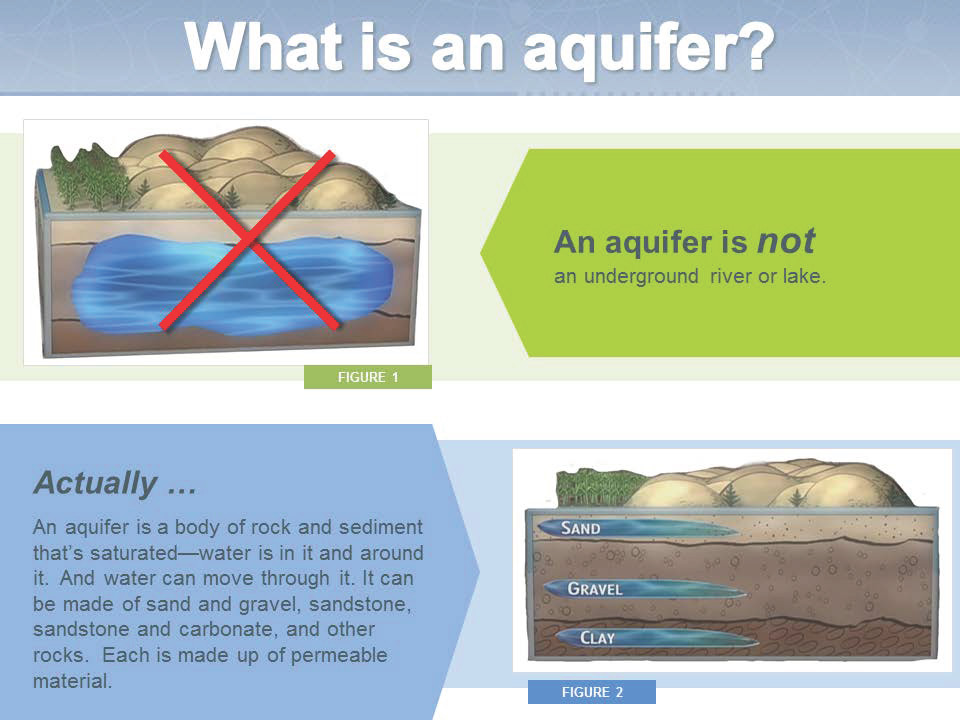Groundwater is one of our most valuable resources, even though you never see it or realize it is there. A huge amount of water exists in the ground below our feet, and people all over the world make use of it. But it is only found in usable quantities in certain places underground and those places are call aquifers.
So, what does an aquifer look like? Some people think that groundwater exists in giant lakes or pools underground, like a cave filled with water. While many caves are filled with water, they are not aquifers.

An aquifer is made up of soils and rocks that have tiny spaces between the grains of soil or crystals of rock called porosity. This porous space is filled mostly with air above the water table and is filled with water below the water table.
Wells can be drilled into aquifers and water can be pumped out. Rain slowly adds water (or ‘recharges’) to the porous soils and rock of the aquifer. But you have to be careful not to pump more water out than the aquifer capacity – if you do, the water table will drop and wells may run dry.
Learn more about confined and unconfined aquifers and weather variations and pollution control.
Credits: PBS Learning Media https://indiana.pbslearningmedia.org/resource/94cf16a4-dd62-4aba-a1b4-0e75d17aa17b/what-is-an-aquifer/
